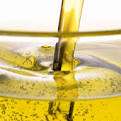
















Cassie - Acacia Farnesiana - sweet acacia
Family: Mimosaceae
Synonyms: Cassia ancienne, sweet acacia,huisache, popinace, opopanax.
General Description:A bushy thorny schrub,much branched, up to 10 metres high. It has a very delicate appearance, similar to mimosa, with fragrant fluffy yellow flowers.
Distribution:Believed to be a native of West Indies, now widely cultivated in tropical and semi-tropical regions throughout the world:mainly southern France and Egypt, also in Lebanon, Morocco, Algeria and India.
Other Species:There are over 400 known species of acacia: other similar species are found in Central Africa. Zaire and Australia. Closely related to mimosa (A.dealbata) Roman cassie(a.cavenia) which are also used for the production of essential oils. Not to be confused with opopanax or bisabol myrrh (Commiphora erthrea0 although they share a common name.
Herb/Folk Tradition:In india a local 'attar of cassie' is made as a perfume. The fresh flowers are used in baths for dry skin, and in the form of an infusion. In Venezuela the root is used for treating rheumatoid arthritis and pulmonary tuberculosis.
There are many types of acacia employed in herbal medicine, notably the Senegal acacia which yields a gummy exudation from the trunk known as gum arabic or gum acacia, mainly used as a demulcent.
Actions:Antirheumatic, antiseptic, antispasmodic, aphrodisiac, balsamic, insecticide.
Extraction: An absolute by solvent extraction from the flowers.
Characteristics: A dark yellow to brown viscous liquid with a warm, sloral spicy scent and rich balsamic undertone. It blends well with bergamot, costus, mimosa, frankincense, ylang ylang, orris and violet.
Principal Constituents:The absolute contains about 25% volatile constituents, mainly benzyl alcohol, methyl salicylate, farnesol, geraniol, and linalol among others.
Safety Data: No available data on toxicity.
Aromatherapy/Home Use: Use with care for:
Skin care: Dry sensitive skin, perfume.
Nervous System: Depression, frigidity, nervous exhaustion and stress-related conditions.
Other Uses: Used in high-class perfumes, especially oriental types/ Used as a flavour ingredient in most food categories, especially fruit products, alcoholic and soft drinks.
Reference: The Encyclopedia of Essential Oils; Julia Lawless.
Articles Latest
- Chamomile Roman - Chamaemelum nobile
- Chamomile Maroc - Ormenis multicaulis
- Chamomile German - Matricaria recutica
- From Biology To Aromatherapy
- Plant Messengers
- Celery Seed-Apium graveolens
- Cedarwood Virginian - Juniperus virginiana
- Cedarwood, Texas- Juniperus ashei - Essential oils
- Cedarwood Atlas- Cedrus atlantica - Essential Oils
- Cassie - Acacia Farnesiana - sweet acacia
- Cassia - Cinnamomum Cassia
- Cascarilla Bark - Croton eluteria
- Carrot Seed- Dacus Carota
- CARDAMON
- CARAWAY
- CANANGA
- CAMPHOR
- CALAMUS
- Calamintha-Calamintha officinalis
- CAJEPUT- Melaleuca cajeputi
- Plant Expression
Articles-Most Read
- Home
- Balsam Canadian - Abies balsamea
- Balsam Peru
- Copaiba Essential Oil
- North America: Tea Tree and Monarda-3
- Basil French - Ocimum basilicum
- Basil Exotic
- North America: Tea Tree and Monarda-2
- Exploring Transcultural Constants
- Thyme Essential Oil
- Balsam Tolu
- Palma Rosa
- The Bioactivity of Essential Oils
- Bay - West Indian - Pimenta racemosa
- Benzoin - Styrax benzoin
- Why Pharmacology Cannot Demonstrate Essential Oil Efficacy
- Exploring Essential Oil Activity The Conventional Way
- Complex information From Plants
- Aromatherapy: An Answer
- Contacts
